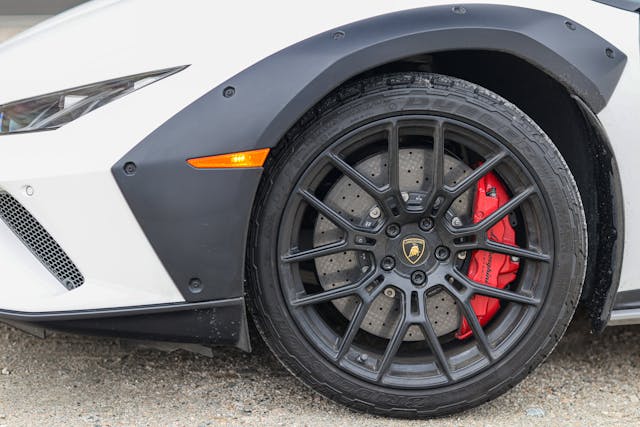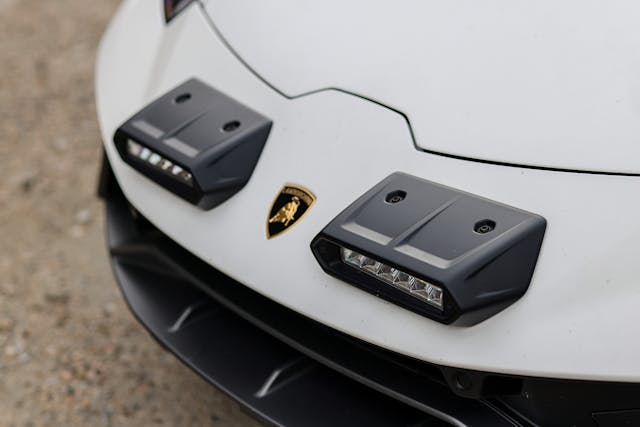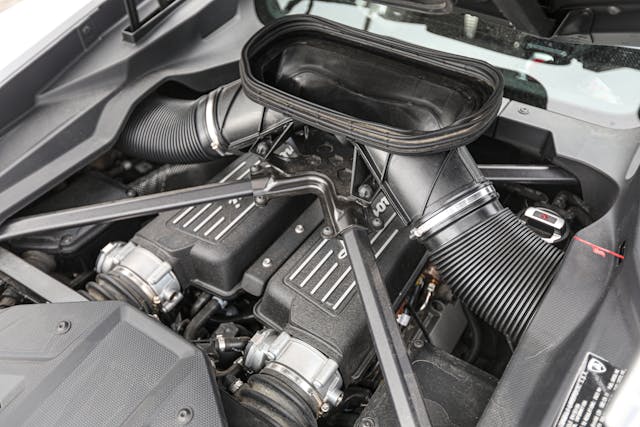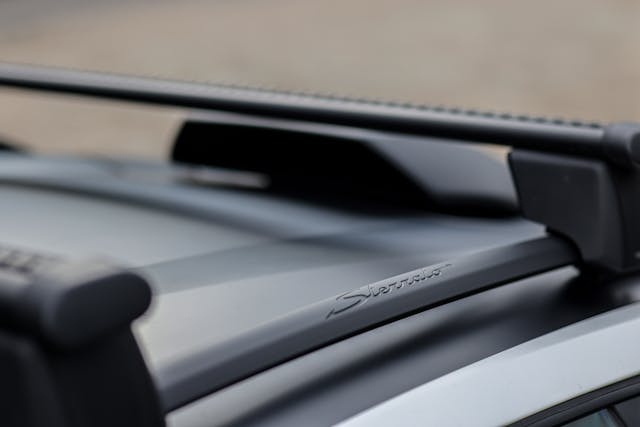Never Stop Driving #115: Safari Style
Safari cars are designed for the street but modified to go off-road with long-travel suspension and beefy, knobby tires. Generally speaking, I am not a fan. Why take a car optimized for the road and compromise it for dirt?
Admittedly, the Safari trend is not new. The earliest cars were built before paved roads, so they were technically off-roaders. In the Sixties, when paved roads were everywhere but before pickups and SUVs became daily transportation, cars were frequently modified for off-road races and European rallies. Actor James Garner raced an Oldsmobile 442 at the Baja 1000. Pete Brock, the genius designer behind the Shelby Cobra Daytona, fielded Datsun 510s at the Mexican race. Few cars took to the desert like the VW Beetle, which was so often modified in Safari style that it earned the nickname “Baja Bug,” as my colleague Aaron Robinson explained.
The Beetle’s close cousin is the Porsche 911, a fact that many modern Porsche owners, I imagine, would like to ignore. Early Porsches are remarkably like the Beetle in terms of layout and engineering details. I worked on several Beetles before restoring a 1969 Porsche 911E. My 911 is so close to the VW that I joke it’s nothing more than a “fancy Beetle,” which makes sense since both cars were designed by the Porsche clan.
Like the Beetle, Porsches—frequently fielded by the factory—went off-road early and often, including in the grueling East African Safari and the Paris to Dakar rallies. The coveted four-wheel-drive Porsche 959 from the mid-’80s was originally developed for off-road rally racing, but changes to rally rules made it unsuitable, so it never raced in the dirt. The 959 marked a two-decade pause for off-road 911s.

Then about 15 years ago, some 911 owners began modifying their cars for off-road. The new look, called the Safari style, took off. We profiled a company called Elephant Racing, which sells Safari parts, in this article. People started modifying all sorts of cars in the Safari style including Miatas, Subaru BRZs, BMWs, and even a Viper. Porsche now offers its own off-road 911, the Dakar, which retails for $225,000. I hear all 2500 copies of this special edition are already sold.
Porsche is not alone. Ford now sells an off-road version of its electric Mustang called the “Mach-E Rally.” This past week one of the most unexpected Safari cars, the Lamborghini Huracan Sterrato, landed at our offices.
The Huracan is Lambo’s entry-level car, and with its howling, naturally aspirated V-10 engine that revs to 8500 rpm, it’s very fast and durable on paved racecourses. To underscore the point, Lamborghini even created a one-make racing series for it. The Sterrato edition follows the Safari playbook with taller suspension, beefy tires, fender flares, and even a couple of auxiliary headlights awkwardly placed on the nose of the Huracan.




I thought Safari style would trail off like every other automotive fad. After all, there is no shortage of factory-built off-road performance vehicles like the Ford Bronco Raptor, which Jason Cammisa hilariously profiled, and the Ram TRX. (Ram’s replacement for that V-8-powered truck is the new RHO.) I thought the shine would wear off once owners got sick of hearing the loud rumble of off-road tires going down the highway.
Clearly, I was wrong. Upon reflection, I think Safari cars are a reaction to carmakers’ hyper focus on speed. Every new performance car has to be faster than the outgoing model and faster than its competitors. These days, a benchmark for cars like the Porsche 911 GT3 RS is a lap time on Germany’s famed Nürburgring Nordschleife racetrack. The Corvette team is currently there testing. Obtaining those lap times requires engineers to fit stiff suspensions and racetrack tires. Sure, buyers want special sports cars, but I hear from owners that some of these high-performance machines are so stiff, they’re undrivable.
A Safari car, on the other hand, is a way to offer a unique model with a cushy suspension that makes the car comfortable for everyday driving on real-world streets. The Sterrato was surprisingly civilized. There’s nearly seven inches between the pavement and front spoiler, almost twice what my 2017 Corvette provides. I could drive the Lambo into parking lots without scraping the front end on entrance ramps. The Lambo also made Michigan potholes disappear, a stark difference from the punishing ride of my old VW GTI.
I cannot afford a $300,000 Lamborghini, but I can sort of see the Sterrato’s appeal—even if I don’t agree with the car’s philosophy. But maybe I’m wrong about this. I’d love to hear your thoughts, which you can share by commenting below.
Thanks for reading. Have a great weekend!
Larry
P.S.: Your feedback and comments are welcome.
Please share this newsletter with your car-obsessed friends and encourage them to sign up for the free weekly email. The easy-to-complete signup page is here. And if you’d like to support the efforts of Hagerty Media, please consider joining the Hagerty Drivers Club.



OK, I’ll have a go…to me, these safaris are the car equivalents of the Sprinter/Transit/ProMaster Class B vans that have been tweaked for off-road excursions. Really, though, with their high COGs, they’re just “softroaders” at best, much like the Safari coupes we see more of these days. That said, I love the latter…I had a chance to see a Dakar 911 at Porsche Grapevine (Texas) last year and it was gorgeous. I’d gladly take it, or almost any coupe you named in Safari trim any day over a towering, clumsy 4X4 Class B.
Thank you for all your articles, I enjoy the read.
Recently purchased a Toyota Prius, I am very impressed. You should consider an article on the Prius, you might be impressed.
Thanks
Ask and you shall receive: https://www.hagerty.com/media/new-car-reviews/2024-toyota-prius-limited-awd-elder-statesman-youthful-verve/
I am surprised that you didn’t mention Peugeot, which had a huge rally history, especially in Africa.
The two stick on driving lights show a lack of imagination.
Hi Larry, I hear what you’re laying down. I live my life outside the normal box. I drive a 1977 Chevrolet K10 shortbed pickup for just what your article has in it. It is comfortable, but goes over “ speed humps” at 30 instead of 15 like a bucking bronco( I am not brand specific) because I chose a shortbed on purpose. I could have chose speed like a Mustang, but opted the slower route of the SM465 trans which I find more manly! All in all, it is what puts a smile on our face , as to what we choose to like, and there are no wrong answers! Just individual tastes!!
Thanks for the article
Yes, let’s raise the center of gravity and put on mud and snow tires. Make sure we also tack on additions which take away from the aerodynamics and ruin the looks. Makes sense to me….
Interesting article, food for thought.
By the way, the correct name of the Lambo is SterraTo (in italian means unpaved road).
I was gonna ask if it’s Serrato or Sterrato – spelled both ways in the article (see Instagram piece). But now it seems that NEITHER are correct!?!? C’mon, Larry, you’re better than this! 😝
Indeed, Sterrato is correct as you mention. The story has been updated to reflect.
For some of the so-called “roads” here in Michigan, I nearly have to put my SUV into “off-road” mode, so I can see why this wouldn’t die off in places where road maintenance seems to be an afterthought.
I like the Safari thing! It’s interesting and fun to see happening!
I’m also surprised it took so long to get to this point!
The two-wheeled equivalent existed in earnest over half a century ago with road bikes being made for “dual sport” use, as it is called today. Back then, scrambler, enduro and ISDT labeled models were commonplace!
I once owned a new Triumph “Jack Pine” enduro model. It was a siamesed high pipe, wide ration gearbox model which provided my first exposure to the joy of playing in the woods. It was followed by a number of dual purpose off road models until I simply aged out.
But I get it!
It also looked to me the off road attraction we see today got supercharged by Covid. The pandemic mindset shifted us into a new mode. It was about getting away from everyone else who might carry the contagion!
That idea of getting into a vehicle which could get you far away from the madding crowd became as attractive as the idea of owning a vehicle capable of a faster lap time!
As always, it’s about the idea a vehicle conveys. Sports cars offering a “dual sport” or rally mode are with us to stay. They speak to where people want to go, even if it’s only in their minds eye!
Off-Road. I am envious of the small sliver of hearty souls who actually go there. It must be a blast. For everyone else, it’s cosplay. It’s my sister who at 5 would dress up like a princess. She was not a princess. You are not Immortan Joe. So enjoy the view from your uber-lifted whatever while you’re stuck in bumper to bumper traffic with everyone else, on your way to drop the kiddies off at Chuck E. Cheese. You badass, you. Maybe you’ll get to park in the grassy lot of a local pick-your-own strawberries farm. You’re an off-road animal. Don’t let anyone tell you different.
I find all of the online stuff to be irrelevant. I am admittedly “Old”. I have been and will die an old school car guy. That isn’t to say that I don’t follow current trends. I am in manufacturing and supply to the auto industry. Maybe the correct statement is “tired”- not “old” there is no one size fits all. If you like off road then build and drive something that does that. If you like high speed go to Bonniville and experience what high speed really is or go to a racetrack. (Don’t try to experience in front of my house!!!!) . I am a fan of cars. All shapes all sizes. I like what I like and can understand the person next to me likely what he or she like. Experience the hobby to the fullest. Do it all. Life is short.
I do believe that the current manufacturing market prices most of us auto enthusiast out of the market. Or at least us sensible ones’, the ones that aren’t willing to finance a truck for 10 years.
Car “People” are and will be a dying bread. It will not happen within my lifetime as I was born in the sixties, but it will happen, and that is unfortunate for our youth.
And Larry I am always up for a phone call….again old school. 🙂
“The coveted four-wheel-drive Porsche 959 from the mid-’80s was originally developed for off-road rally racing, but changes to rally rules made it unsuitable, so it never raced in the dirt.” Um…the 959 won the Paris Dakar in 1986. Right? I understand the previous versions were improvements built on a Carrera. But the 1986 car at least had the water & air cooled 959 engine and a lot of the systems that eventually went into the production 959 later on.
I first saw pics of Garner’s Olds in the late 80s and fell in love. That this is really only happening in super-premium brands and some EV is too bad. Maybe Subaru will give us a reasonable end of the market gas or hybrid version.
A Dodge Charger done up more stylistically like Garner’s era (rather than the Lambo look) could be fun.
I respect the 911 Safari (sort of) because of Porsche’s rally heritage, but the Lambo strikes me as a faddish cash grab. It may be a perfectly fine car, but I’m guessing it (and most of the 911 Safaris) will go into Collector Cocoons, never to feel the mud between their treads.
That Lambo, however, is surprisingly usable even though it looks like a spaceship. There’s a great view out front.
I raced modified VWs both off road and on dirt tracks in the early 1970s, so modfying a pavement-designed car for unpaved surfaces is one of the things I do (or did). I also had a 1992 GMC Jimmy 4×4 that we took off-road every chance we got, although at the time it was also our main daily driver.
While my racing days are long past, I still long for going places a Prius or even a Camaro wouldn’t find passable. We have finally decided to go new (to us) car shopping, and a true 4×4 with decent ground clearance is a requirement. There are a lot of trails in Idaho, anf they are calling my name.
Hint: don’t buy a Lambo for those Idaho treks! 😉
If you can swing it, the Bronco Raptor is worth a look.